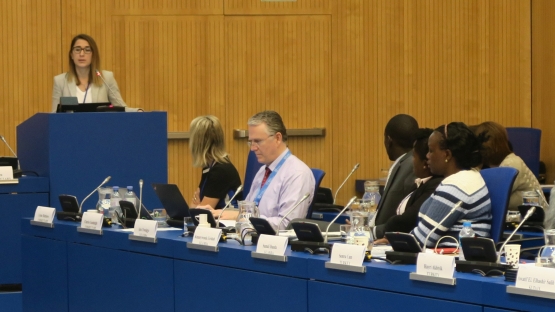Modelling human resource development can be an effective tool to assist nuclear newcomer countries in understanding the required competencies and workforce needed to establish and maintain a safe, secure and sustainable nuclear power programme. The IAEA is providing a modelling tool that can help countries in planning and educating the required human resources.
“Human resource development for nuclear power requires a national effort and will involve a Member State’s government, education system, existing nuclear organizations and national utilities and industries,” said Dohee Hahn, Director of the IAEA Division of Nuclear Power. Planning for this endeavor therefore requires a comprehensive national analysis. “Modelling is uniquely suited to support this effort. The IAEA will continue to assist Member States as they examine their workforce.”
The IAEA provides helpful guidance for Member States to survey their workforce and educational systems to identify and close gaps in their workforce for nuclear power. One example for its guidance and assistance is the Nuclear Power Human Resource (NPHR) Model, provided to Member States for use in analyzing their human resource development.
The NPHR modelling tool is a system dynamics simulation of a nuclear power programme and the national nuclear workforce. The model includes the educational tracks, training, and career cycles for the workforce supporting the owner/operator organizations, the regulatory body, and the construction workforce. The tool is useful for providing a long perspective look at the workforce to determine any skill gaps that might present risk to the programme. More than 14 Member States have so far been trained in using the model.
Users of the modelling tool from ten nuclear newcomer countries (Egypt, Ghana, Kazakhstan, Kenya, Morocco, Niger, Nigeria, Poland, Saudi Arabia, Sudan, Turkey and Uganda) gathered for the Technical Meeting on Human Resource Development Analysis and the Use of the NPHR Modelling Tool for New Nuclear Power Progammes, held from 12 to 15 February 2019 at the IAEA. In addition, experts from operating countries (France, Russia, the UK and the USA) highlighted the status of their nuclear workforce and the challenges that every country may face.
Each of the embarking countries presented results of their human resource development studies and explained how they used the model. Most Member States indicated that their national workforce studies were directed by the nuclear energy programme implementing organization (NEPIO) and conducted with participants from other relevant organizations. The studies relied on data from the national education system and the national workforce.
Several Member States indicated that modifications to the model were needed to properly reflect their education system. Participants reported on additional modelling they did in their countries to validate modelling results and on national gaps that they had identified as well as decisions made to close them.
Main take-away points were the identification of key events during programme development with which the human resource development plan must be coordinated: the delivery of a full scale simulator of a reactor control room and the delivery of fuel prior to commissioning. Participants also discussed the other factors that can affect the workforce requirements, and the resources available to embarking countries.
The model users highlighted that working groups composed of representatives from different national organizations should support the analysis and reiterated the need for a national effort.
Additional training and more on-line resources, including web-based training, to be provided by the IAEA would be very useful, participants agreed. They also suggested that the IAEA could play a role in validating models and results and in providing benchmark data. Several participants made plans during the meeting to share their modelling effort and learn from each other.
Human resource development for nuclear power requires a national effort and will involve a Member State’s government, education system, existing nuclear organizations and national utilities and industries.



